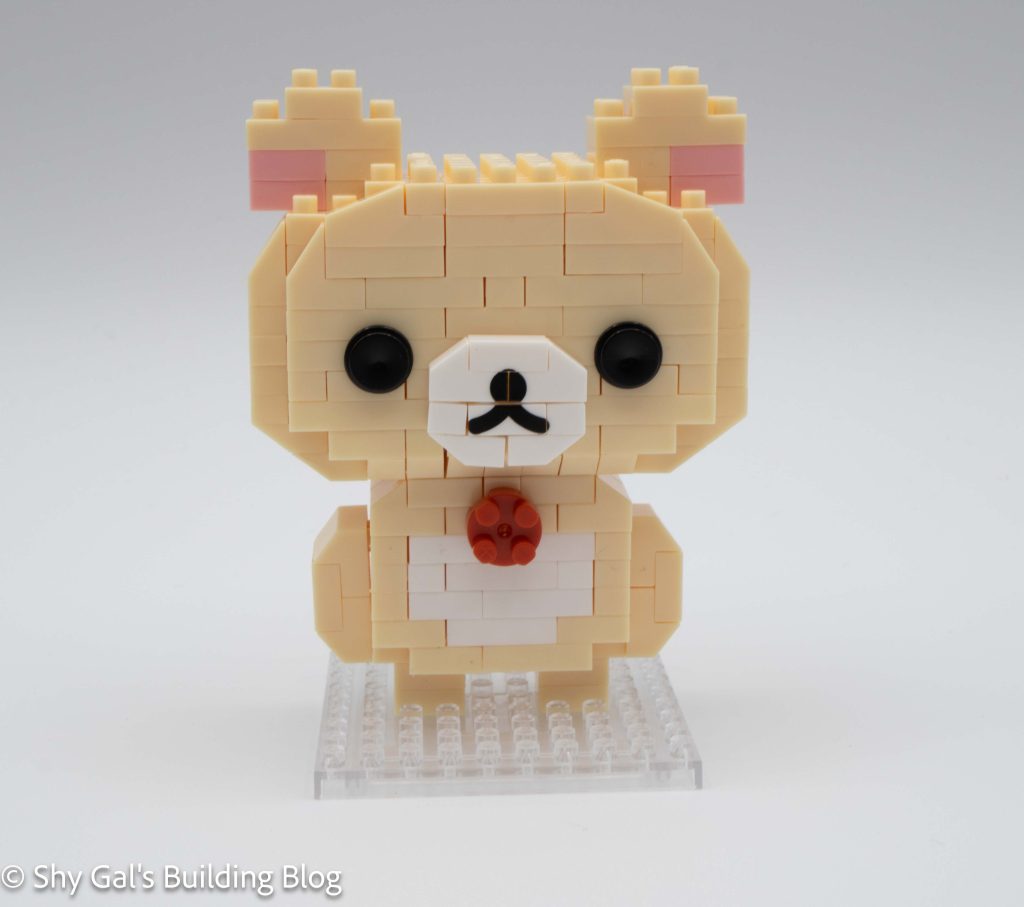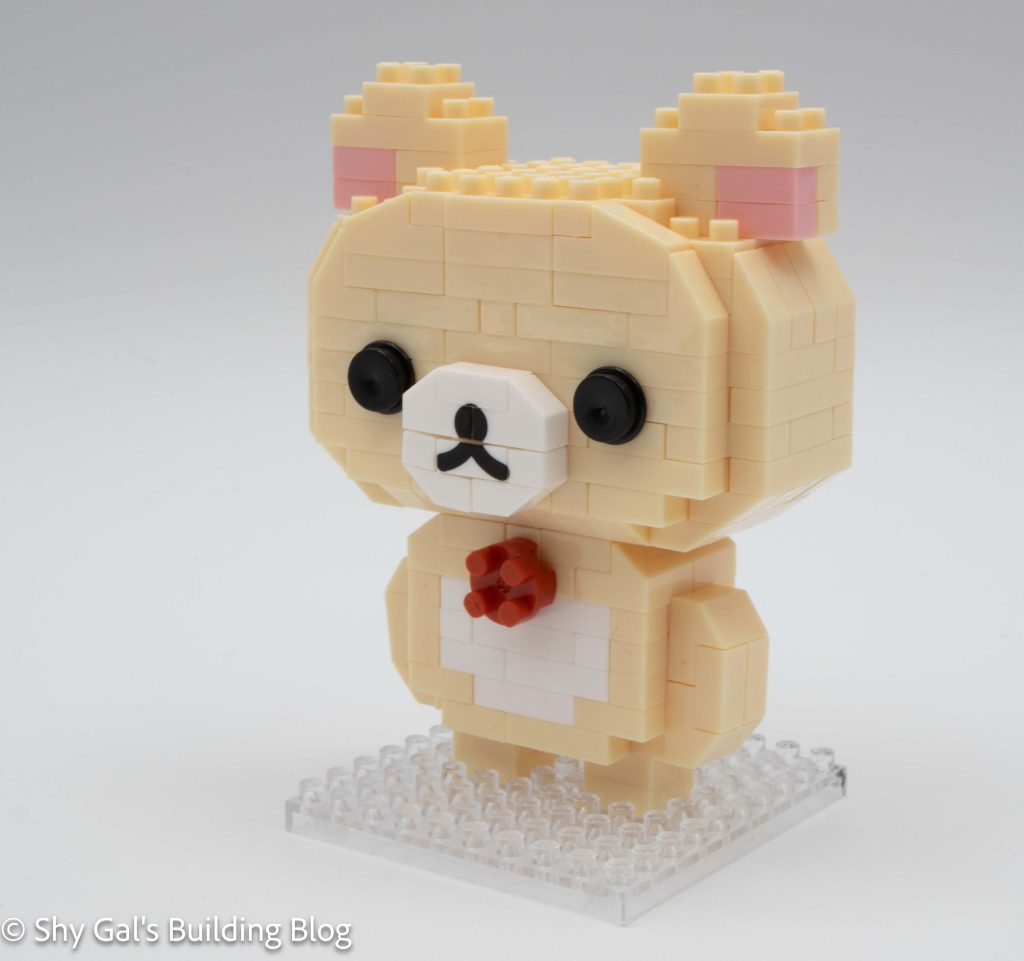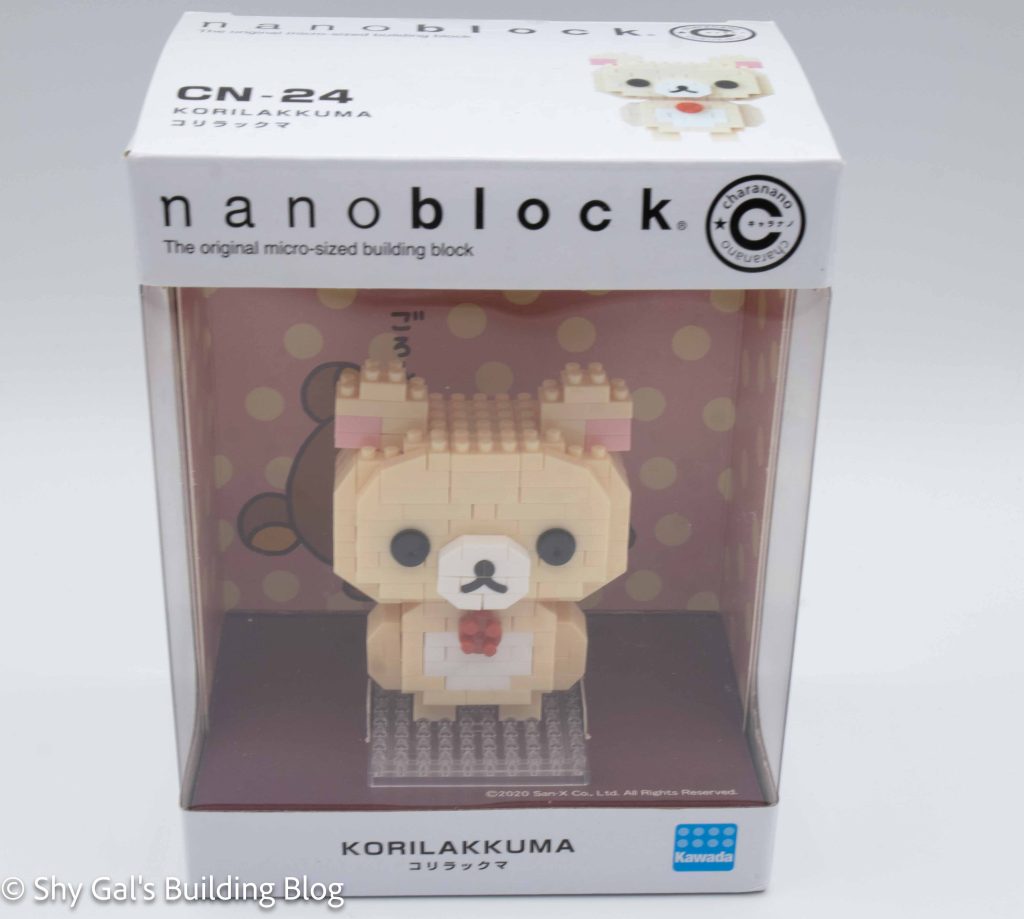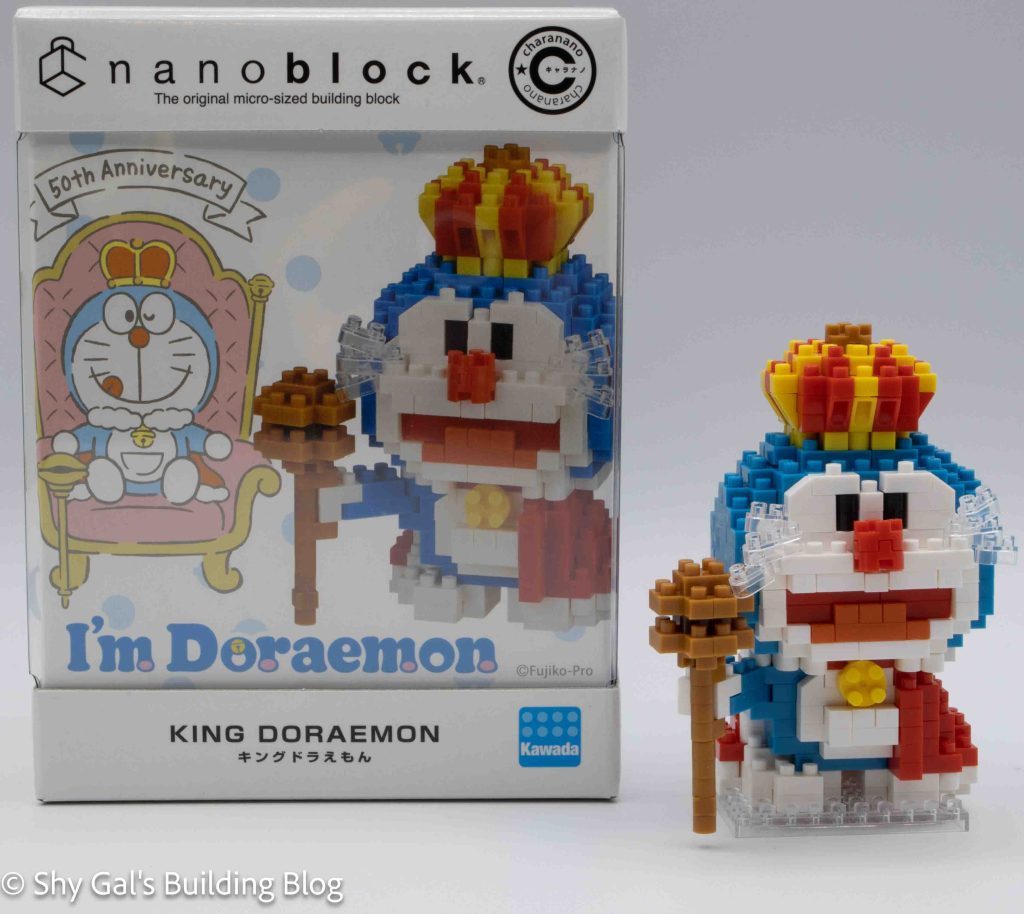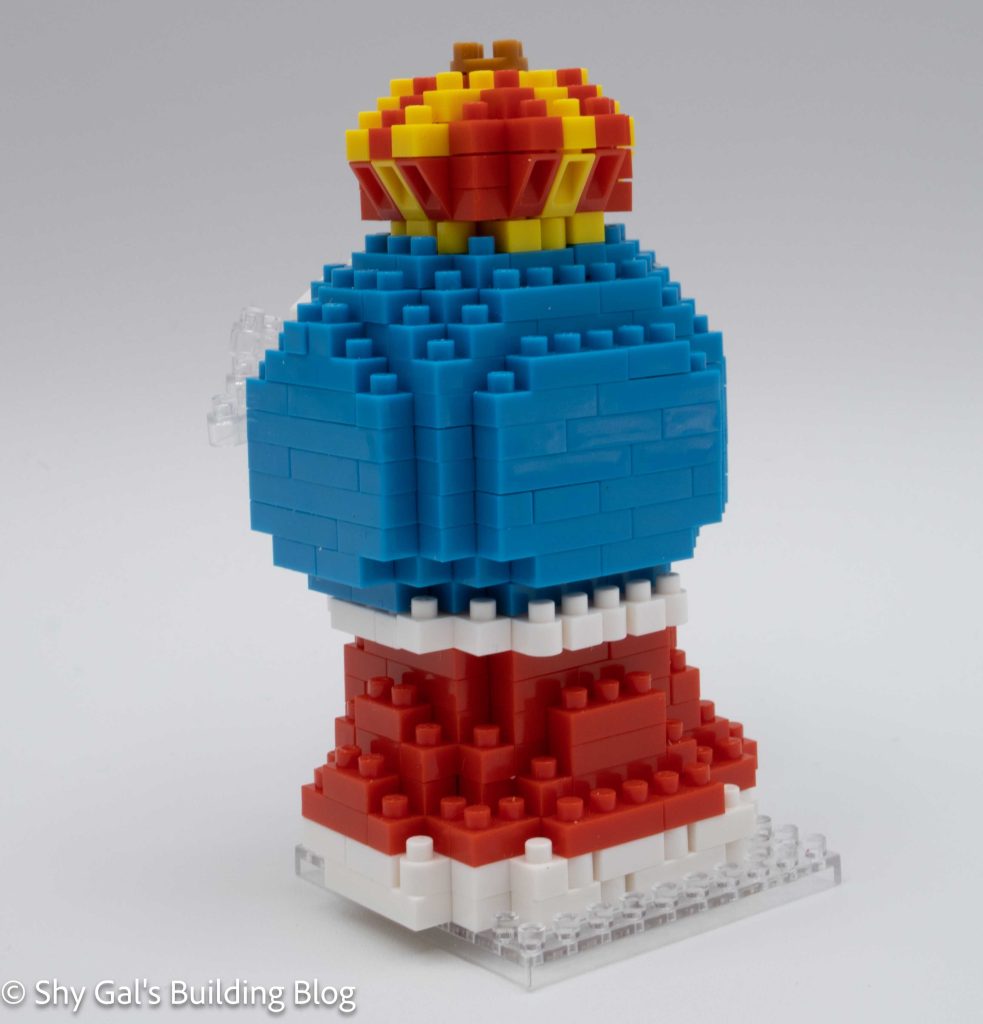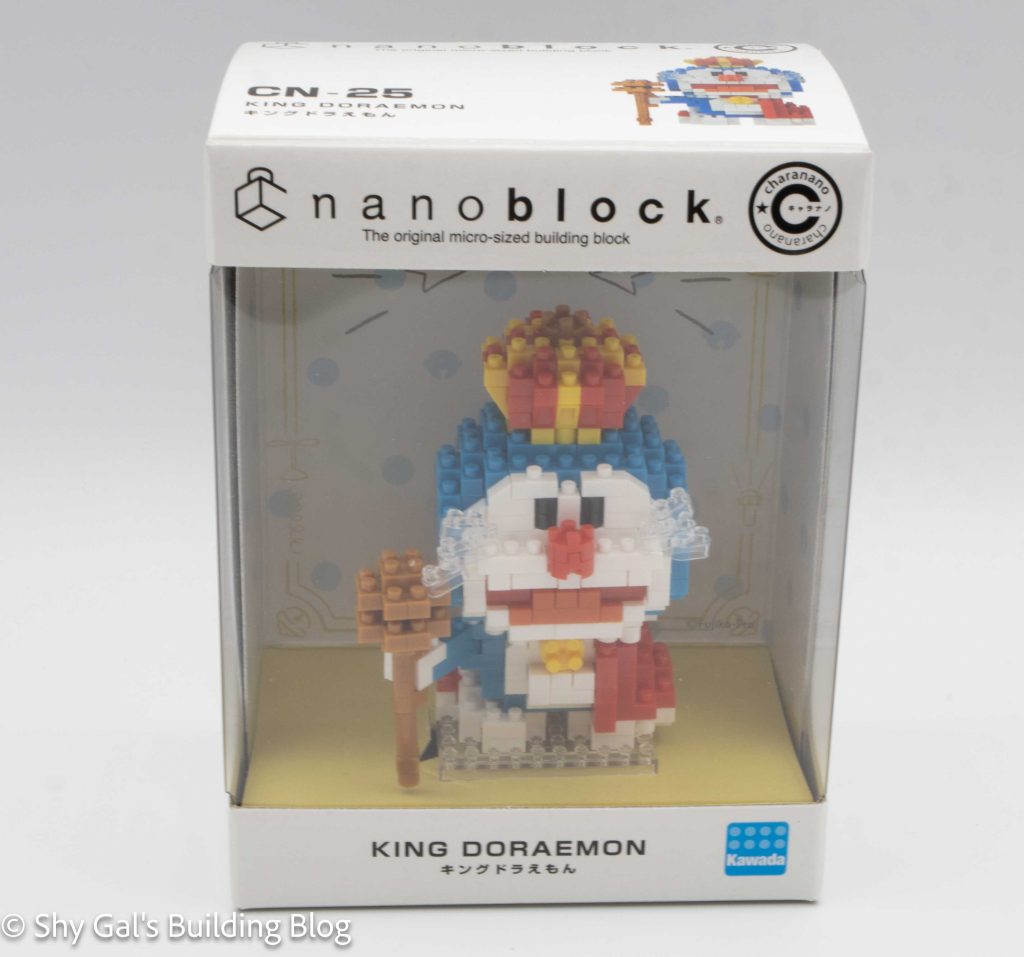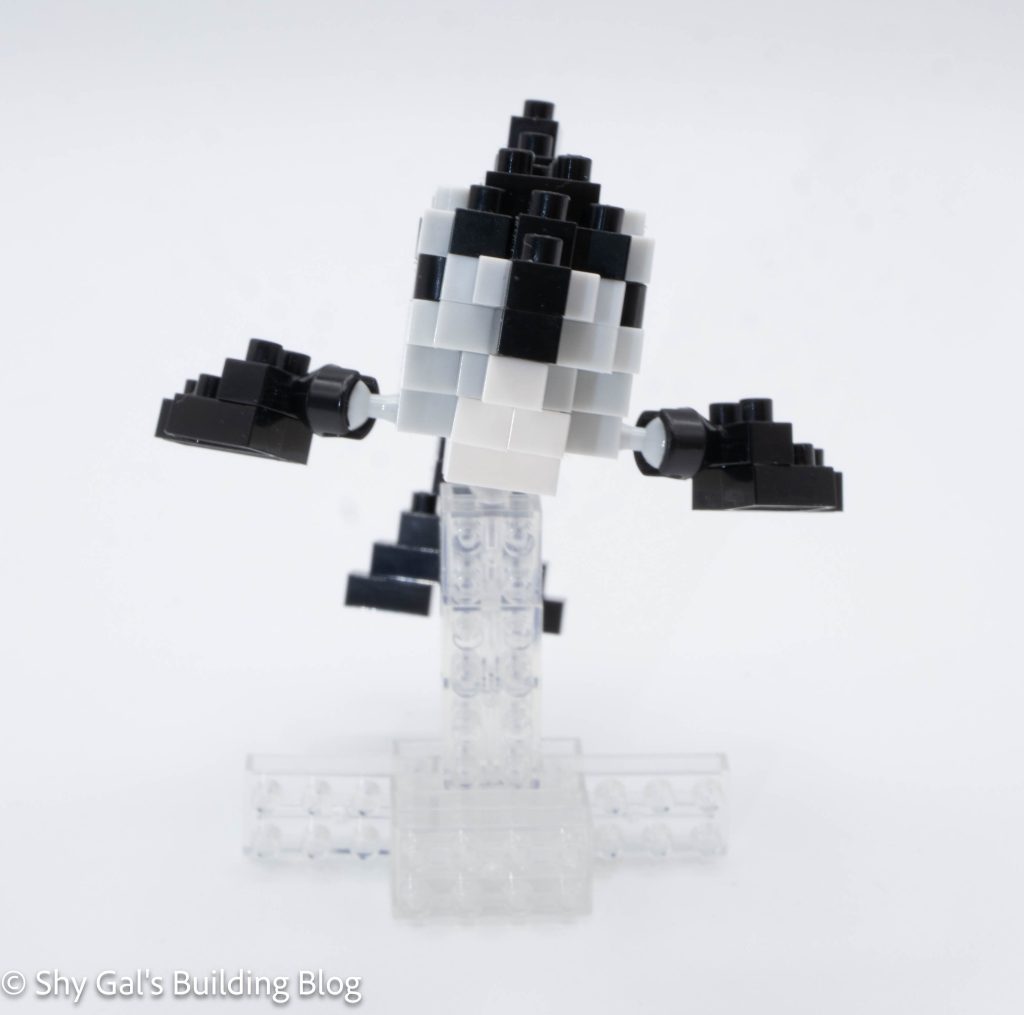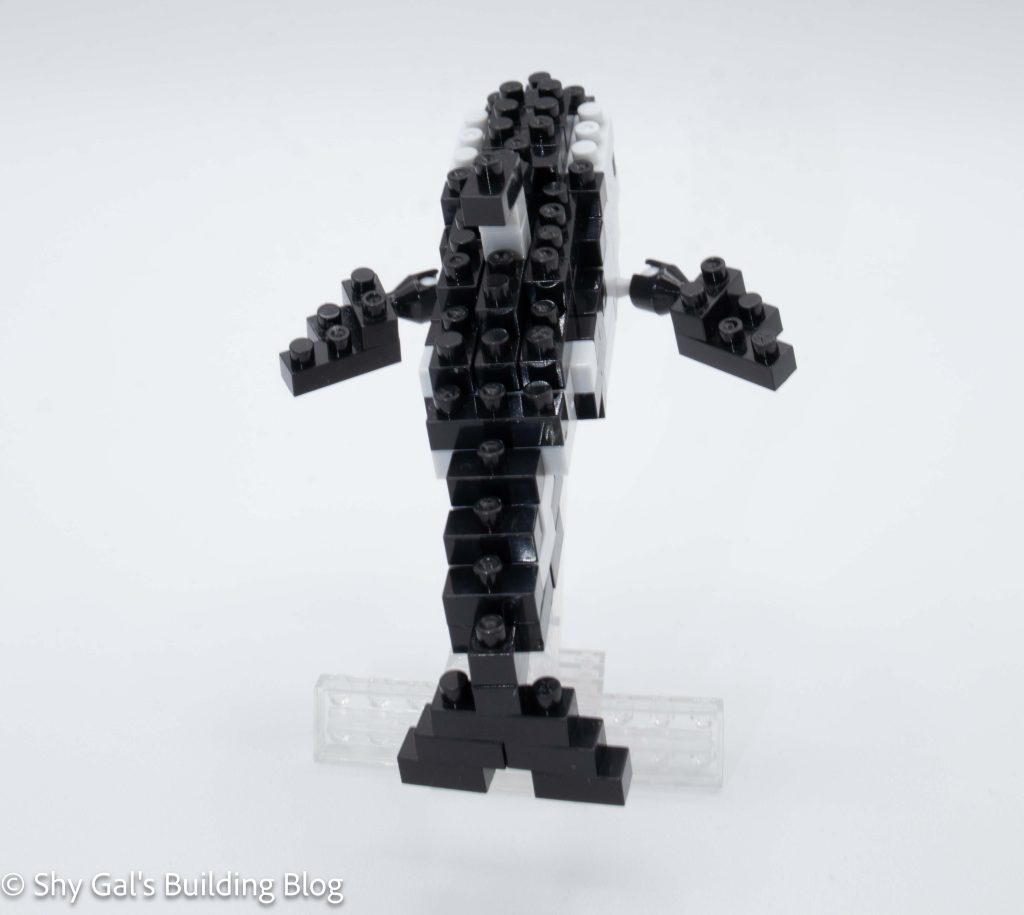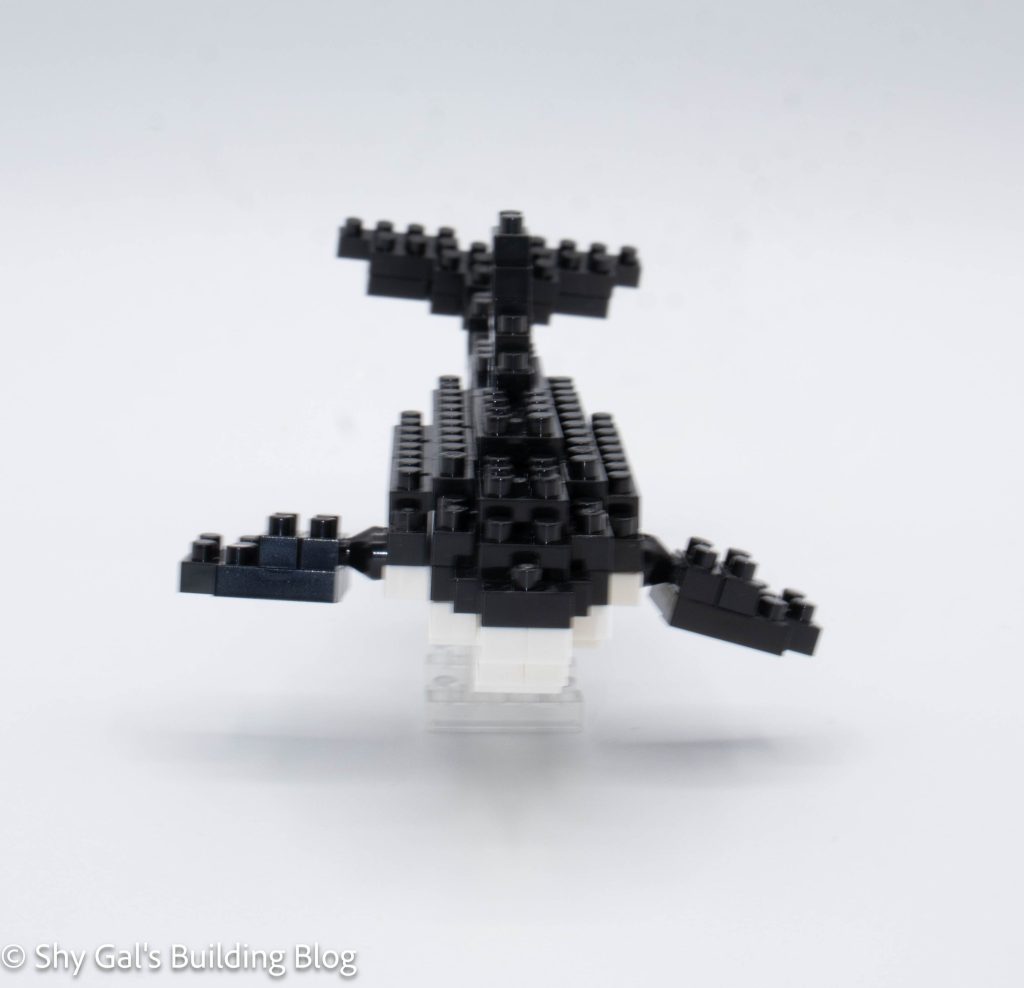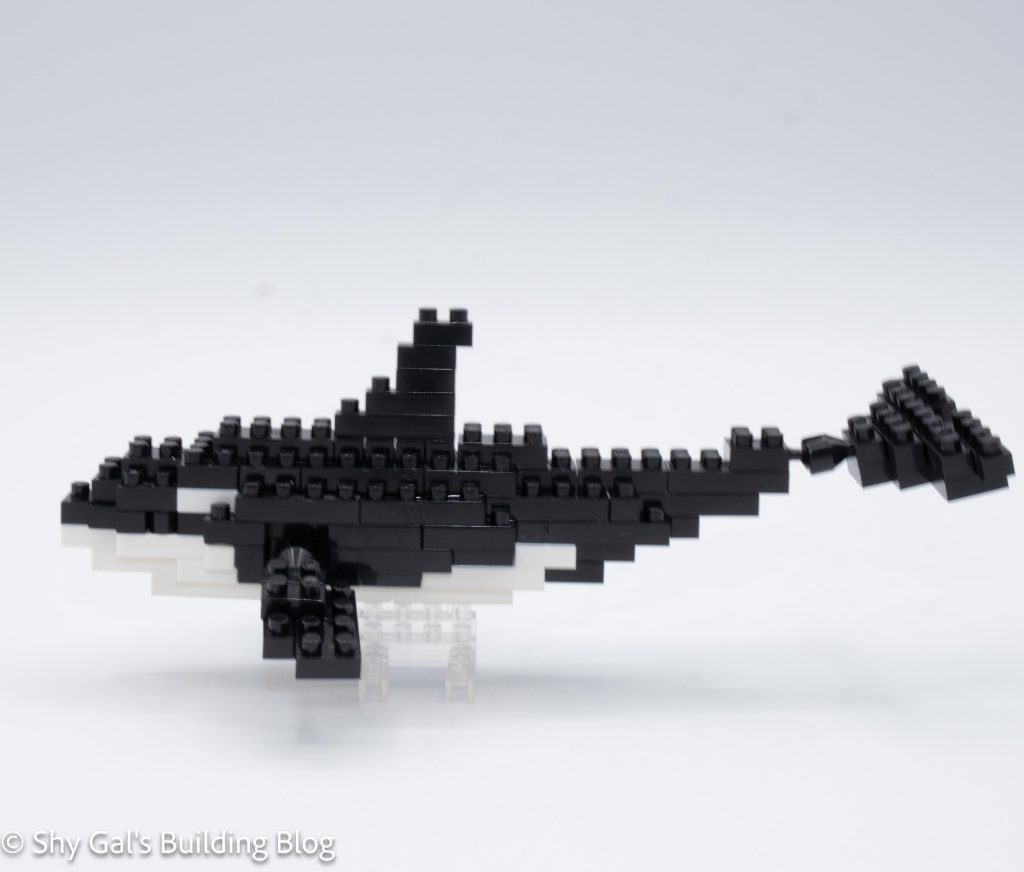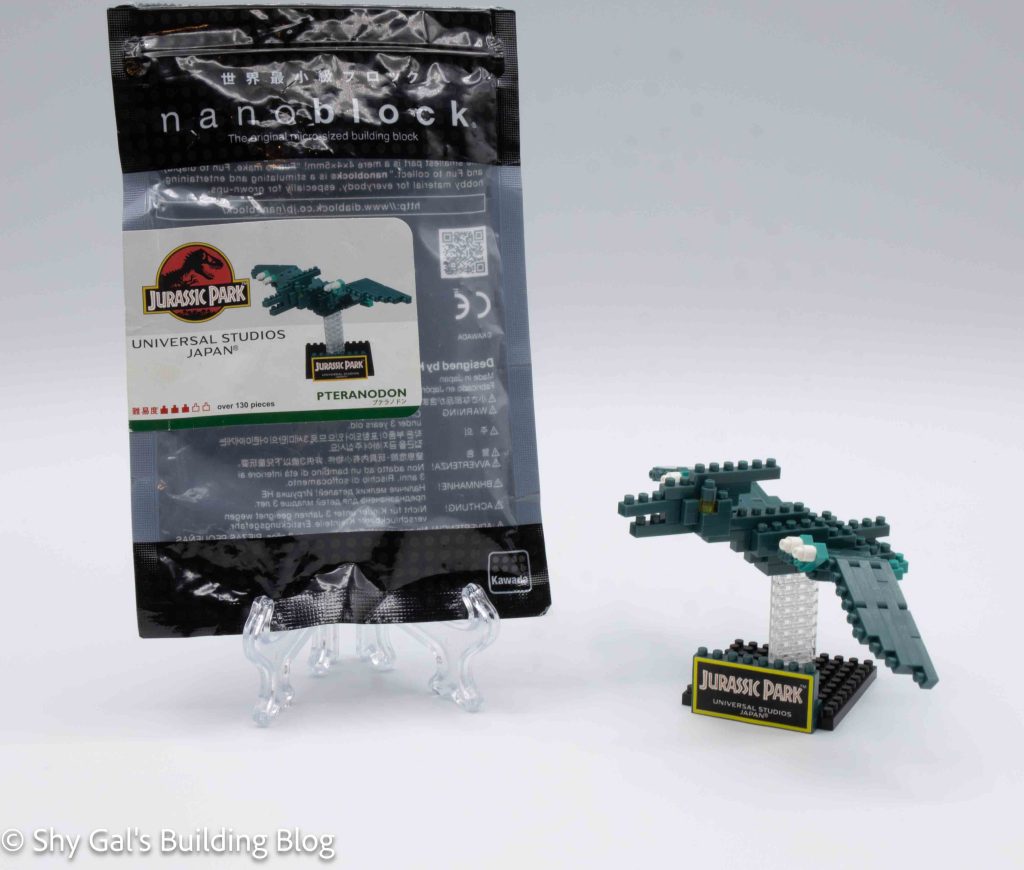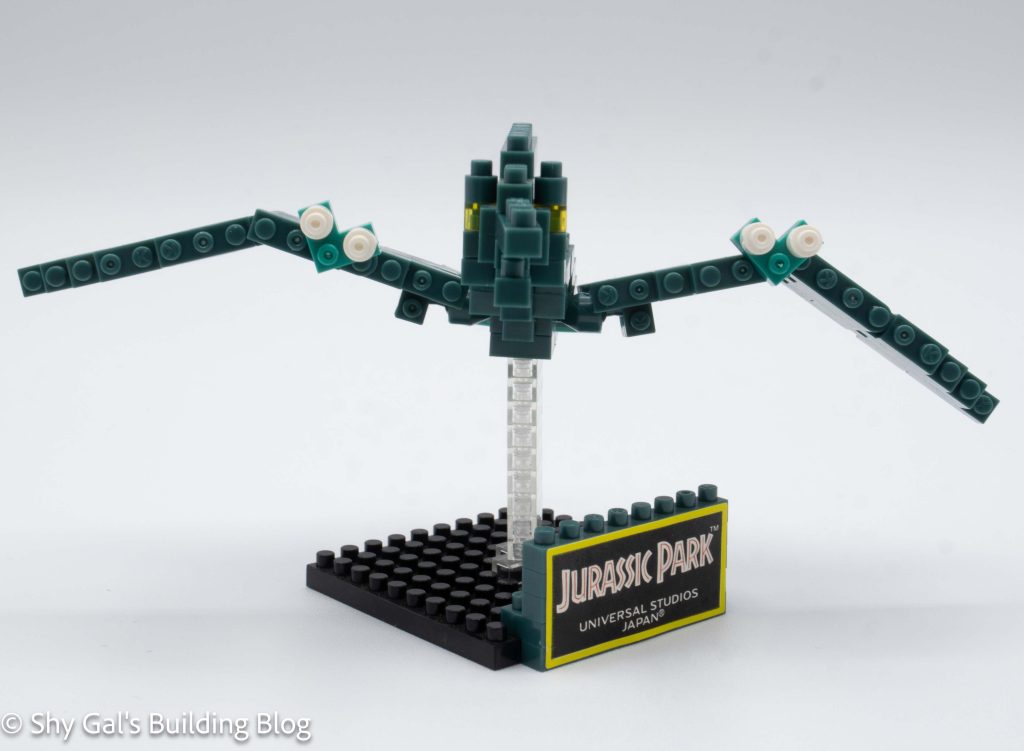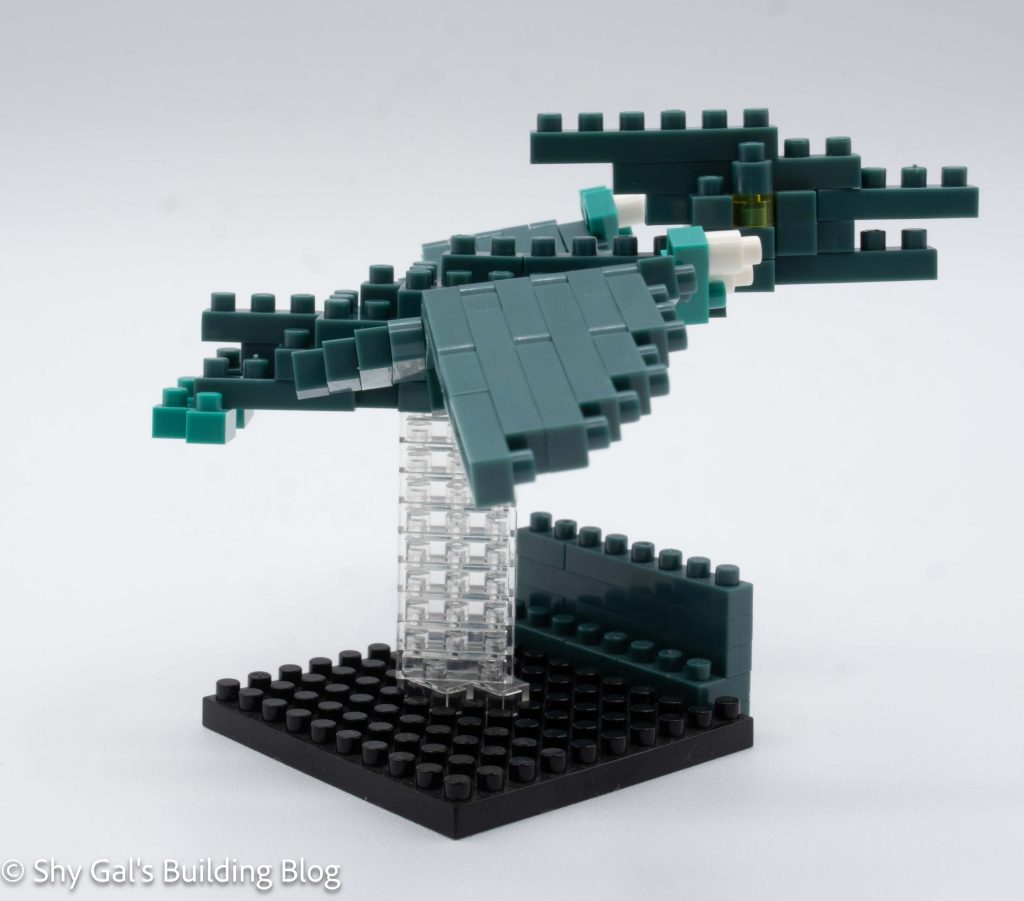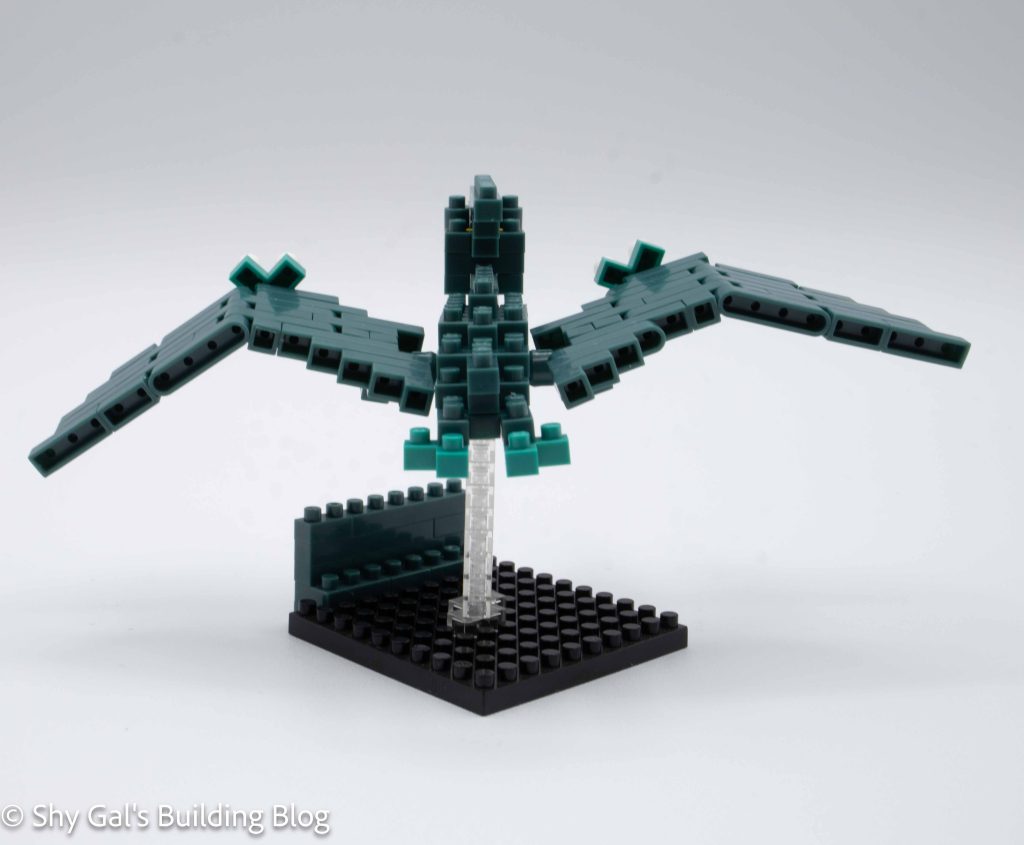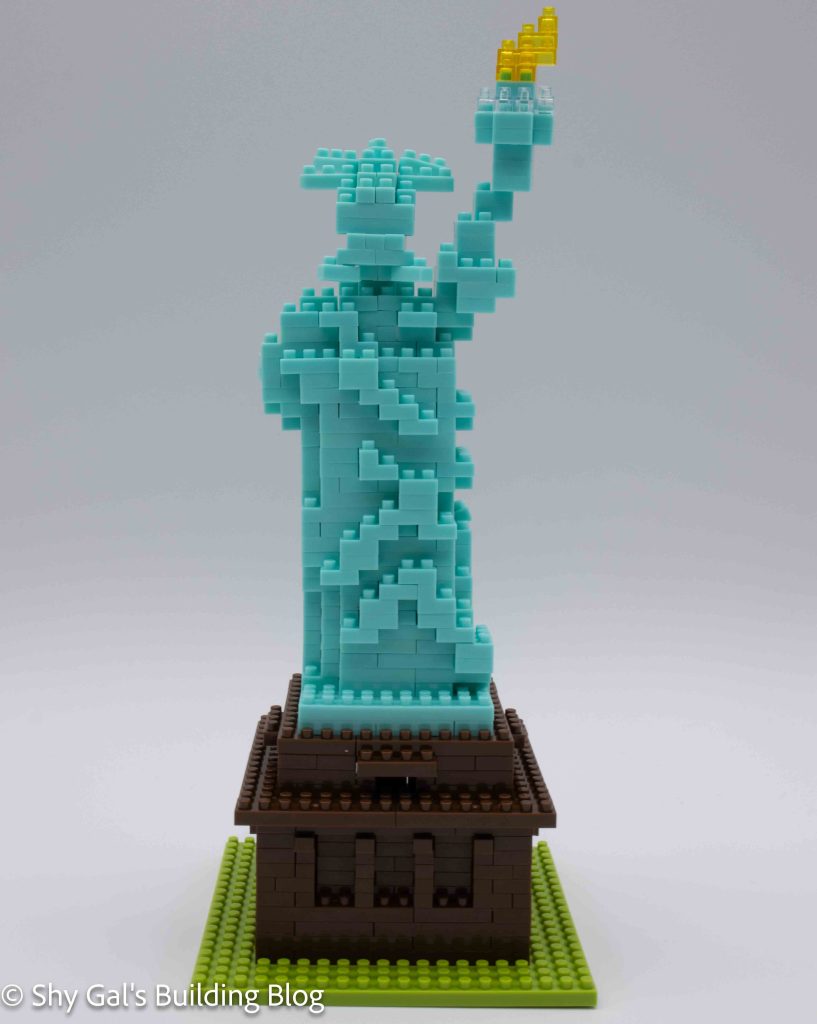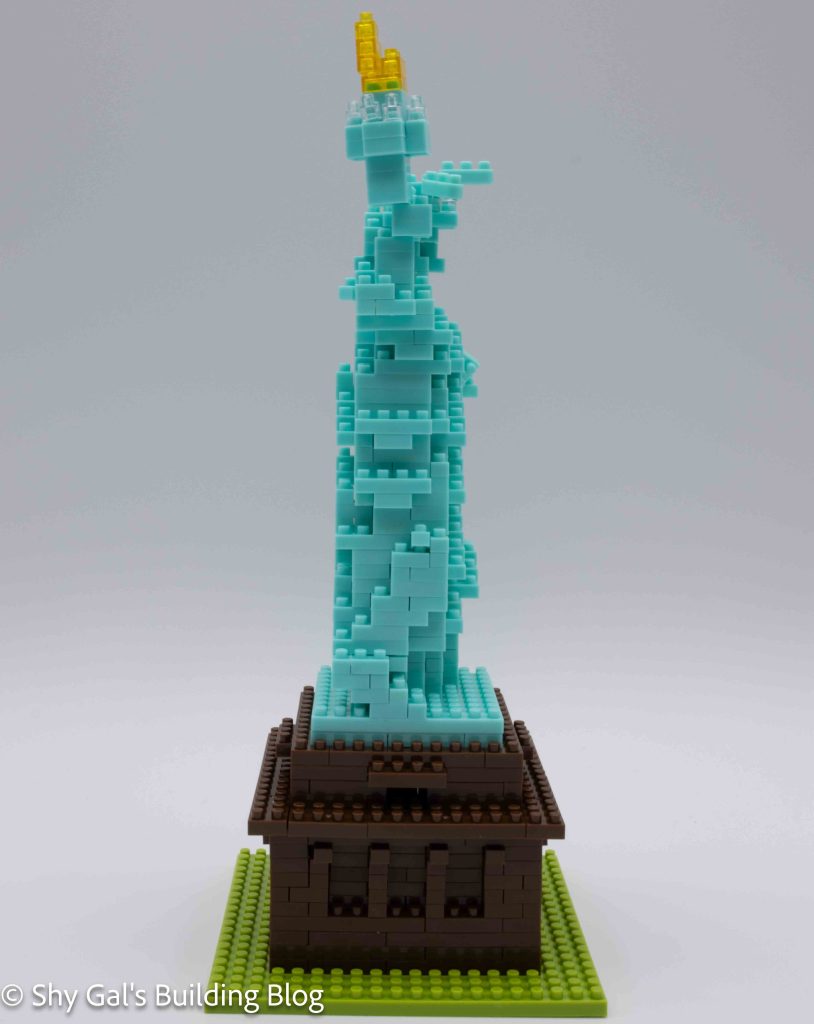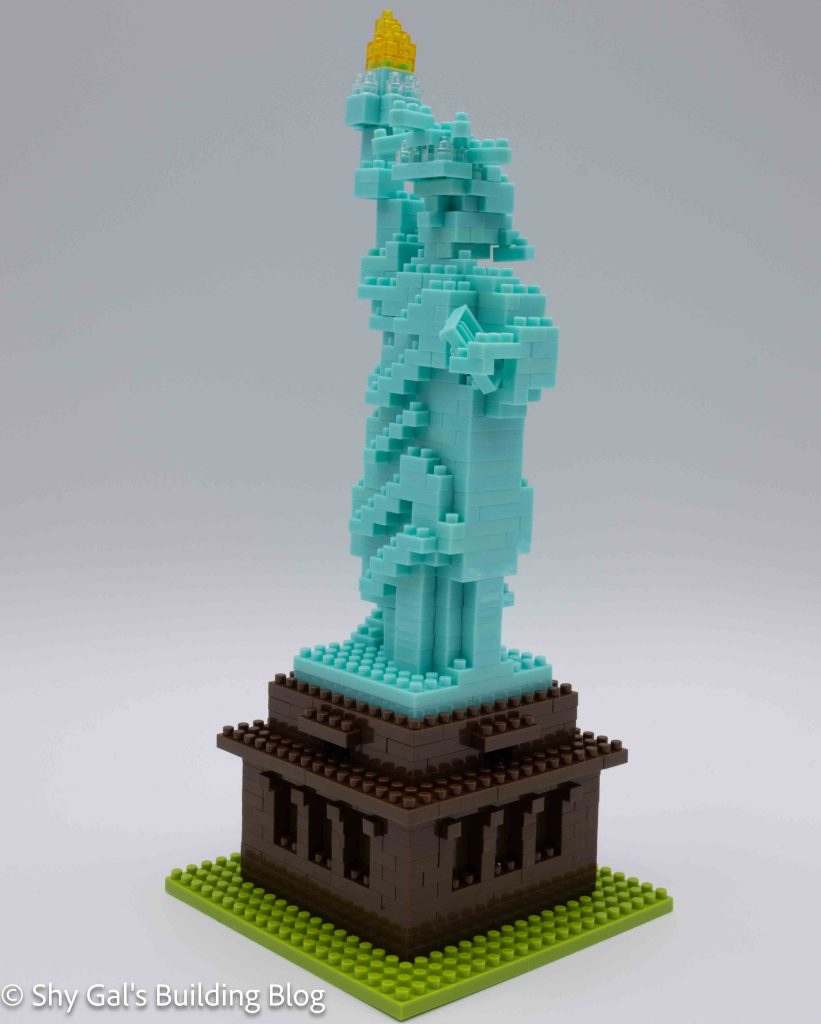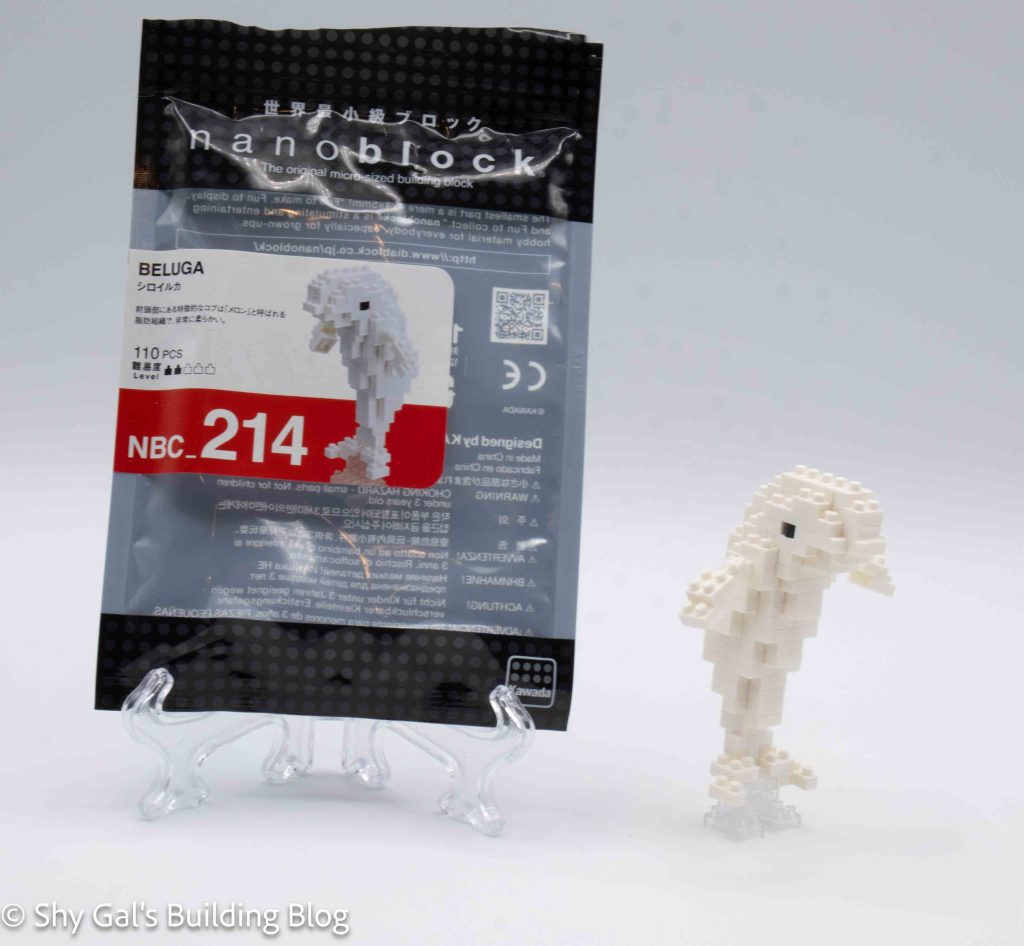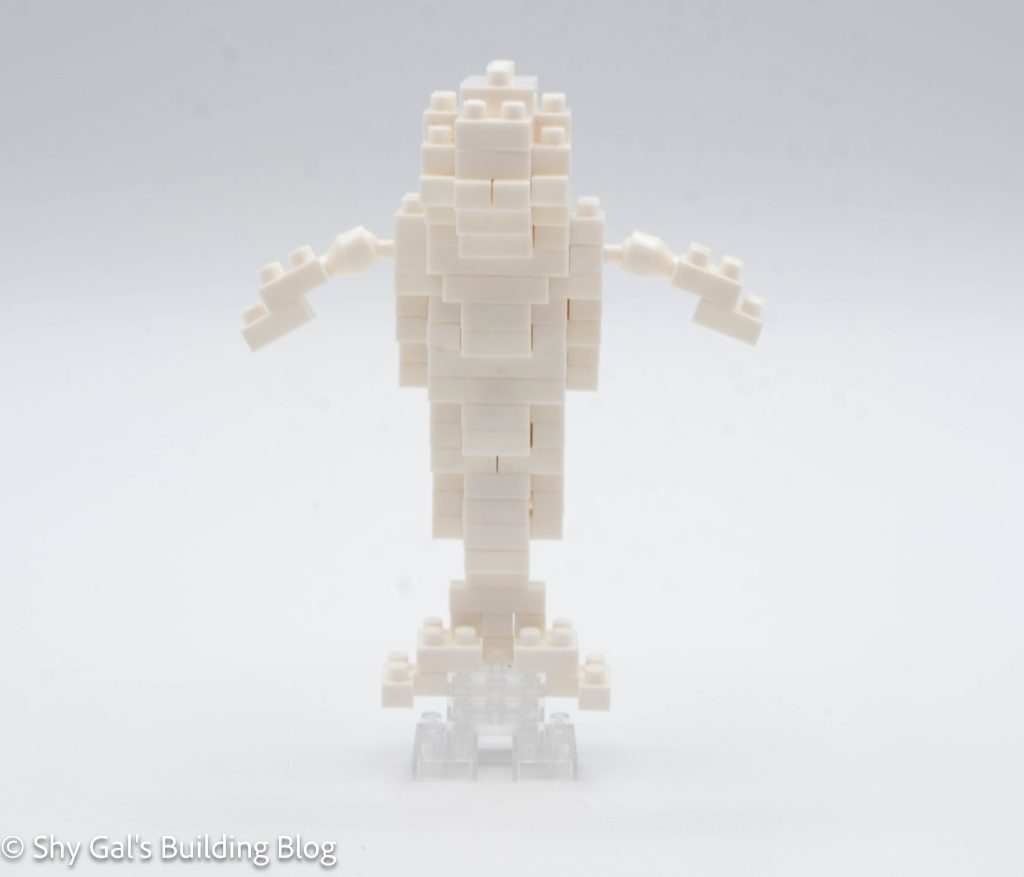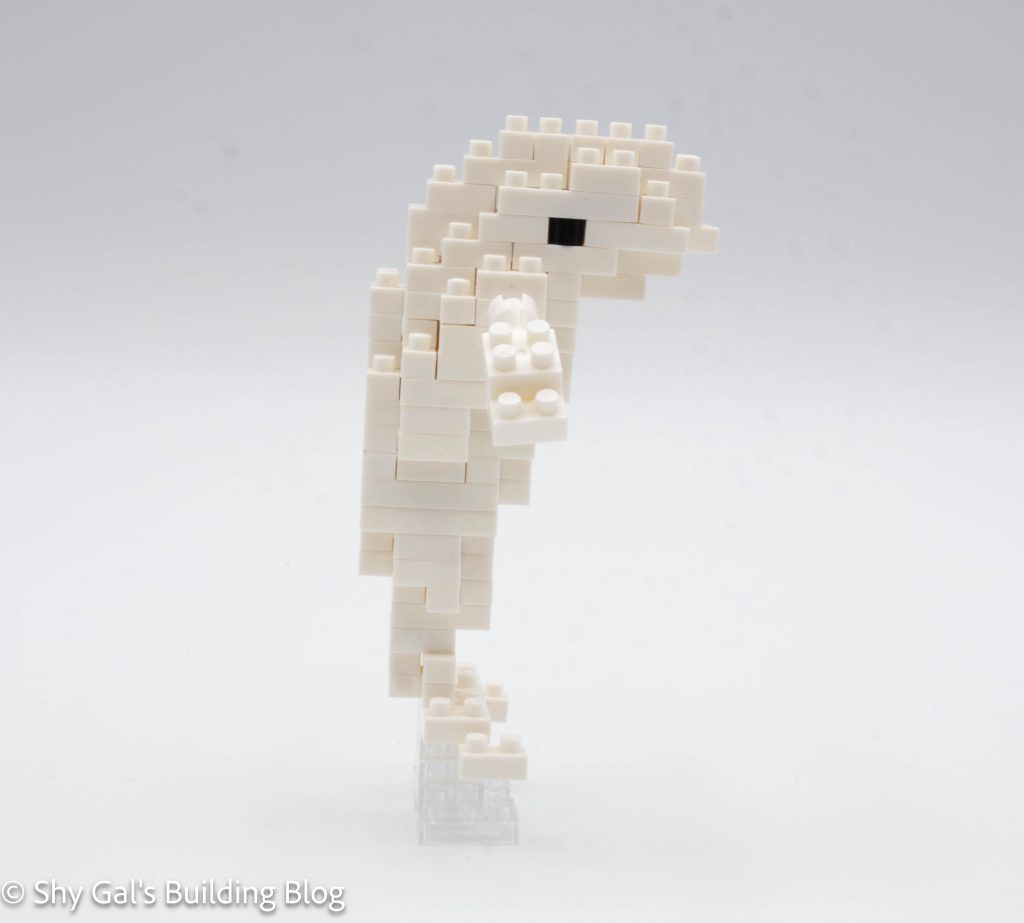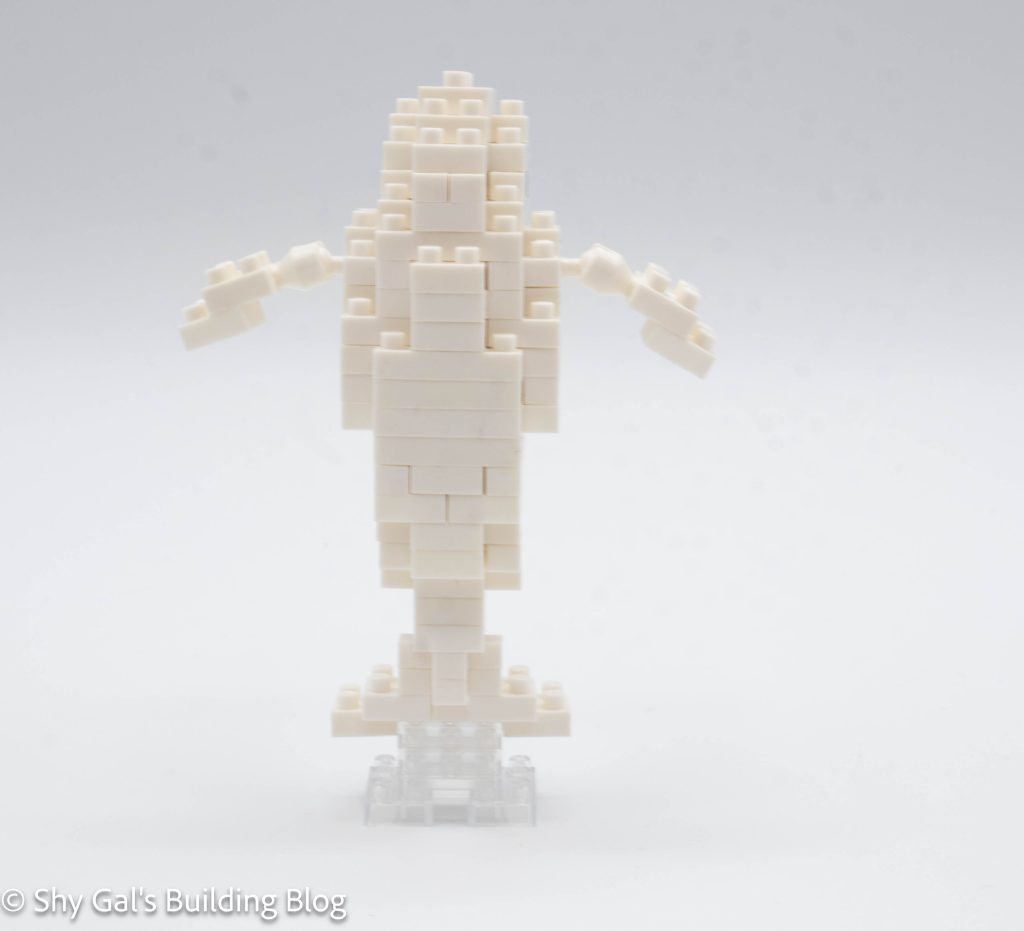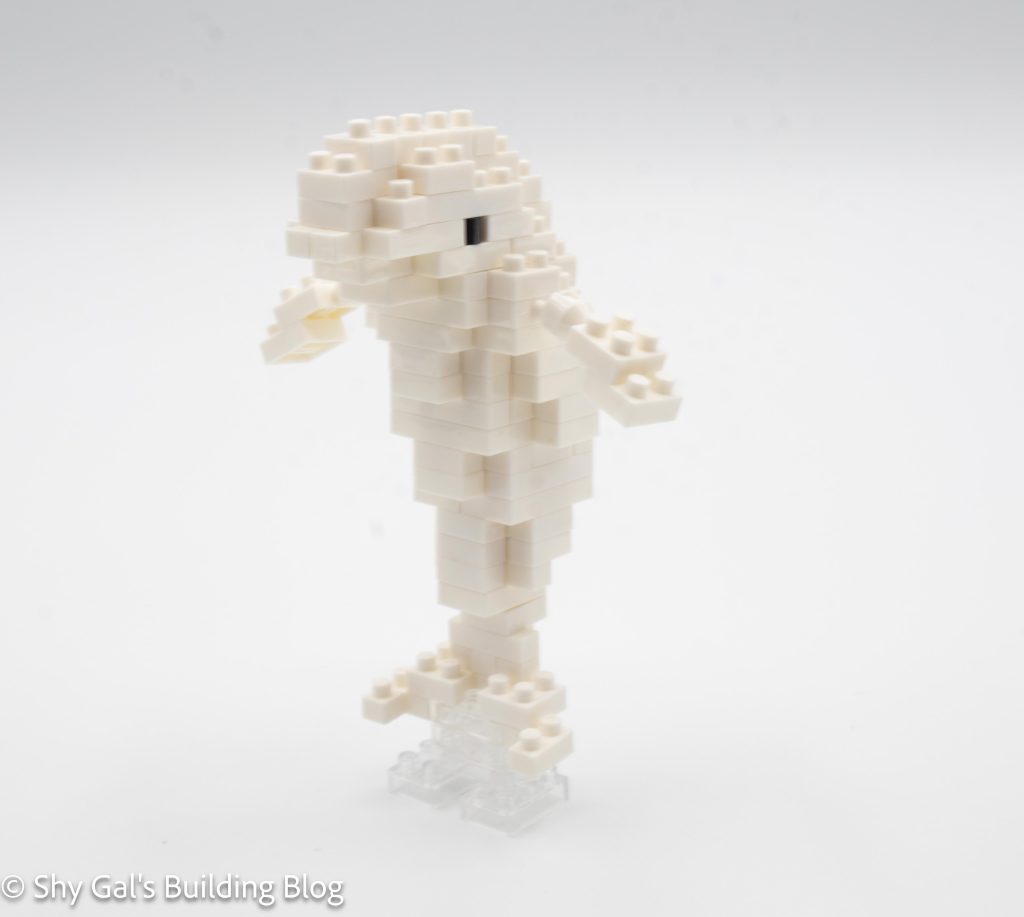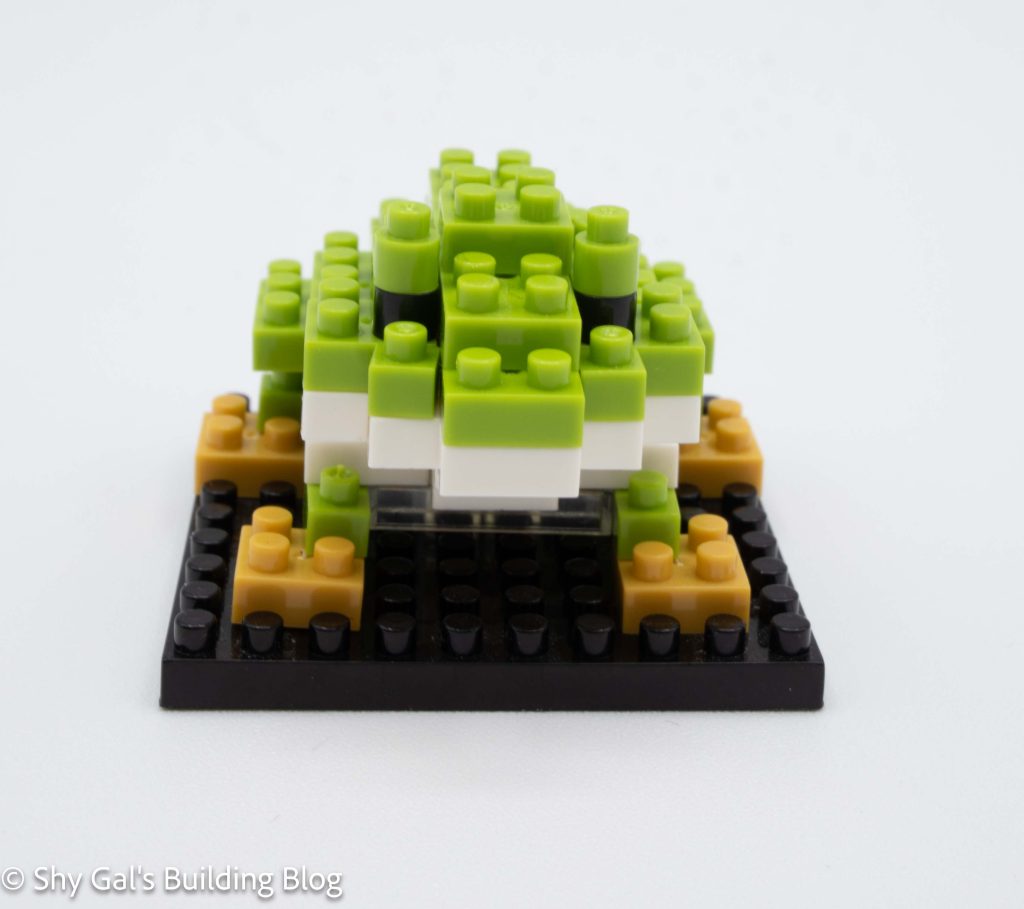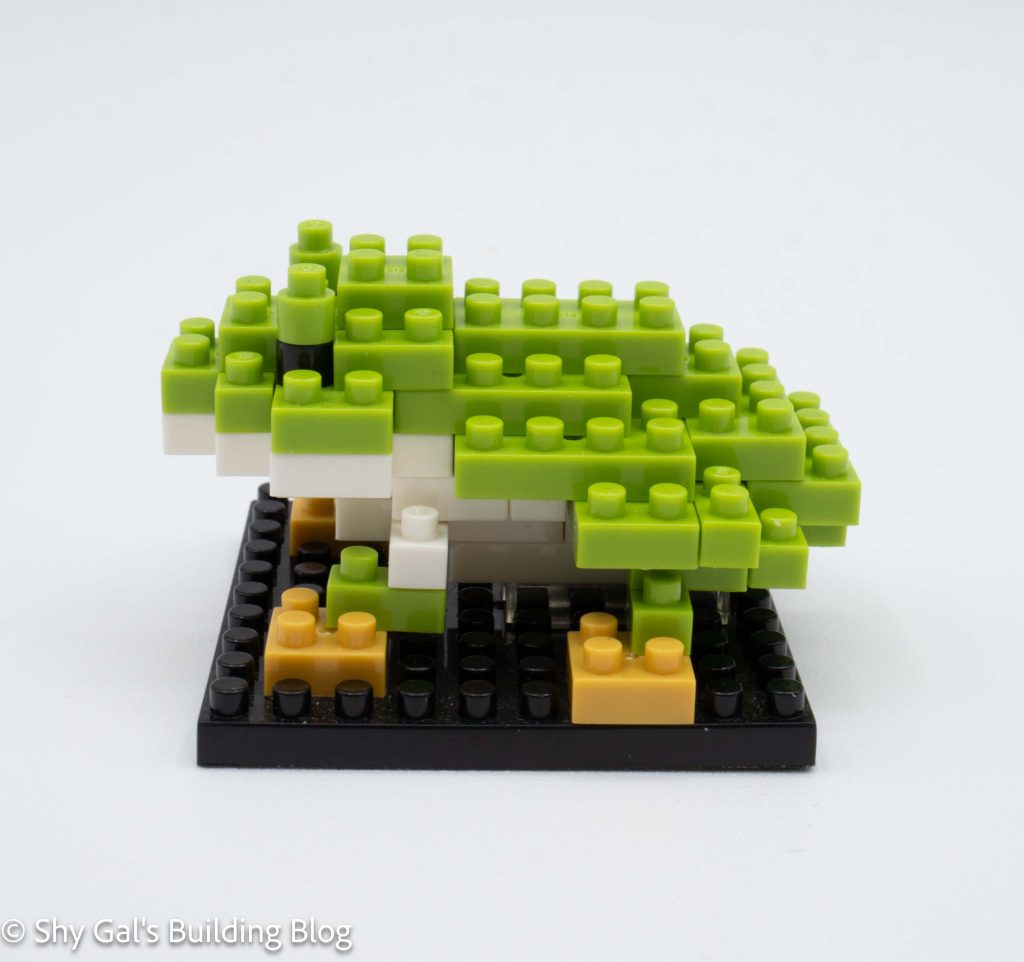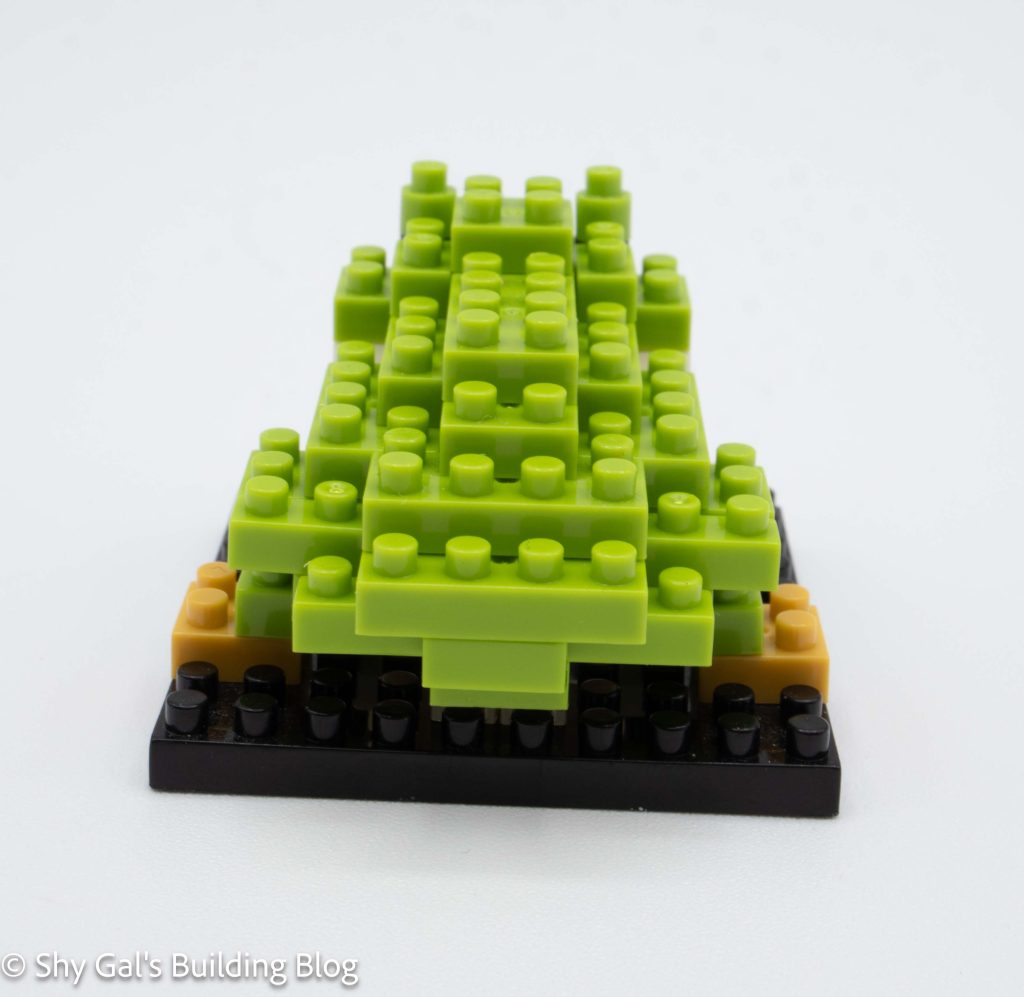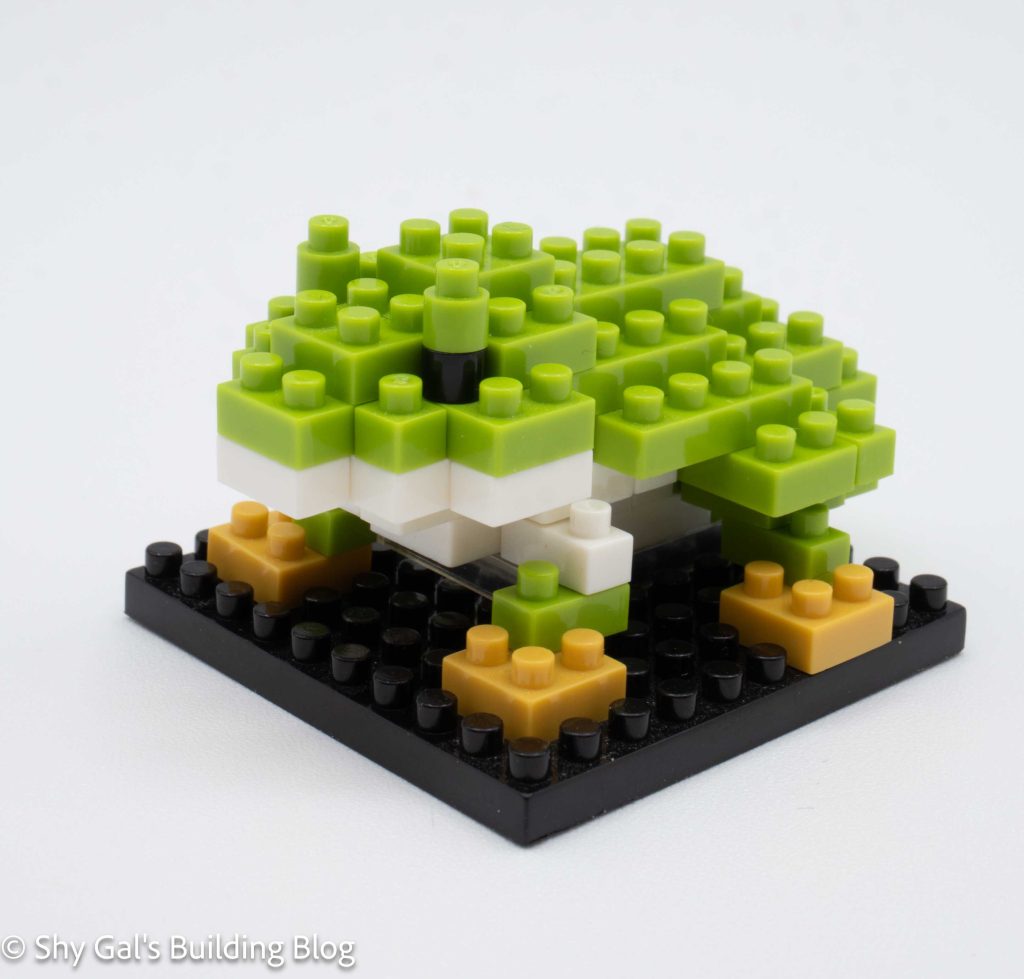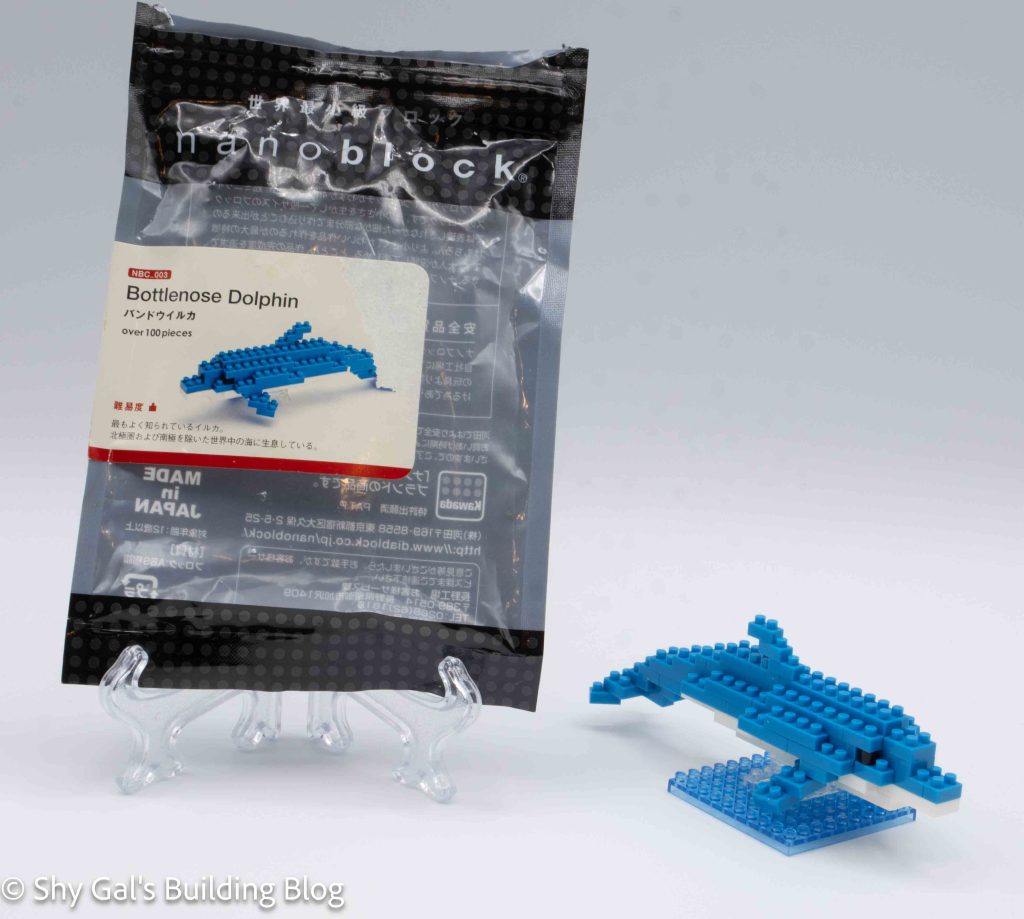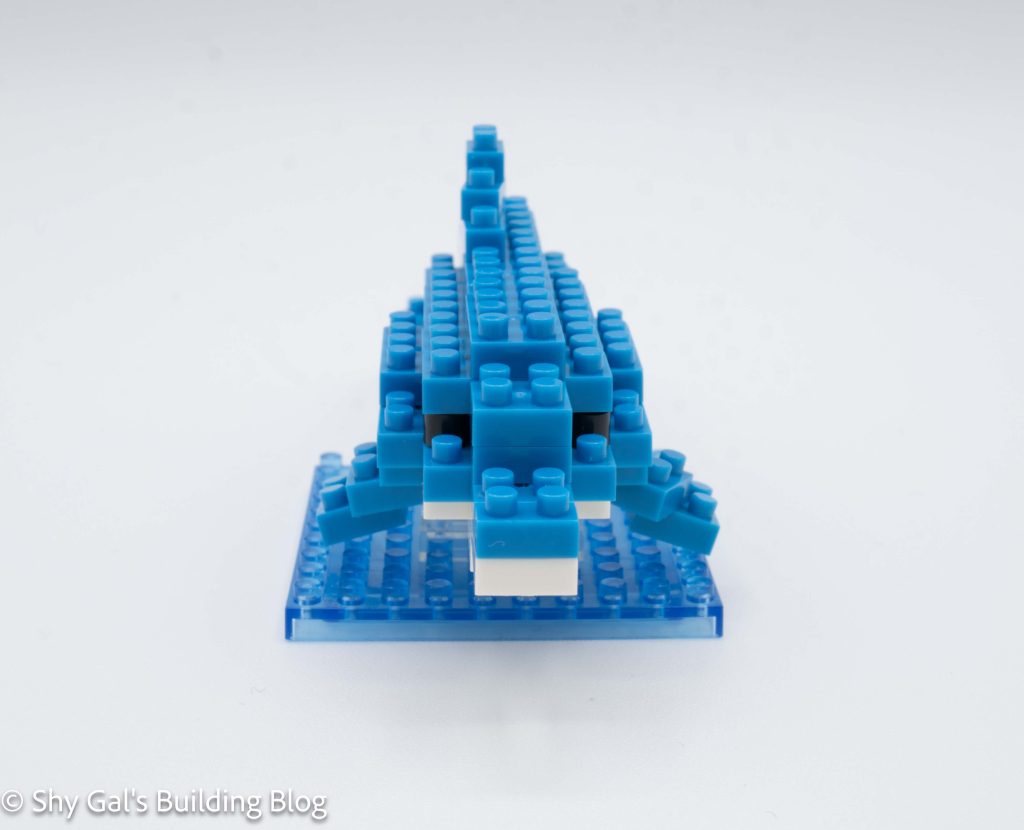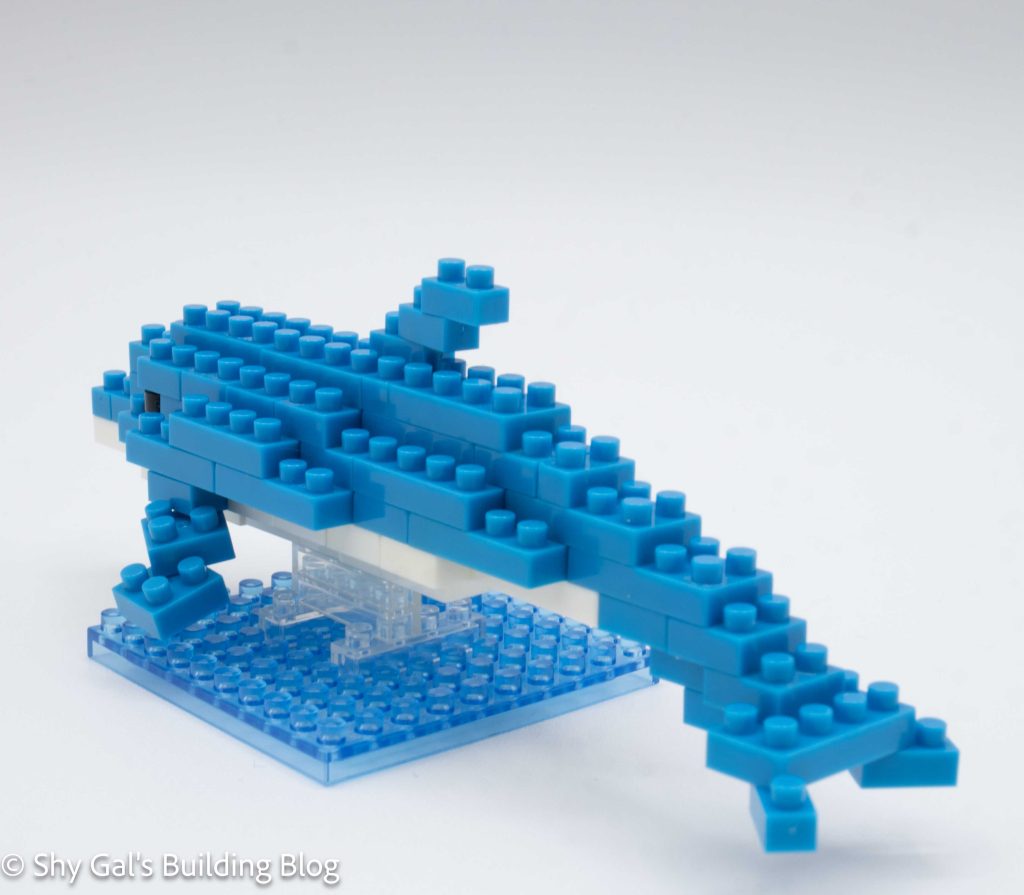
This post is a review of the nanoblock Rilakkuma build. Rilakkuma is part of the nanoblock charanano collection. Wondering what else is part of the charanano collection? Click here for a list.

Number: CN-23
Number of Pieces:
Difficulty Rating: 2/5

There are several Rilakkuma builds created by nanoblock. Most of the builds are part of the character line. This bear is unique because it is part of the charanano line. This line is unique because the finished model comes in a display box, so you don’t have to dust the model.
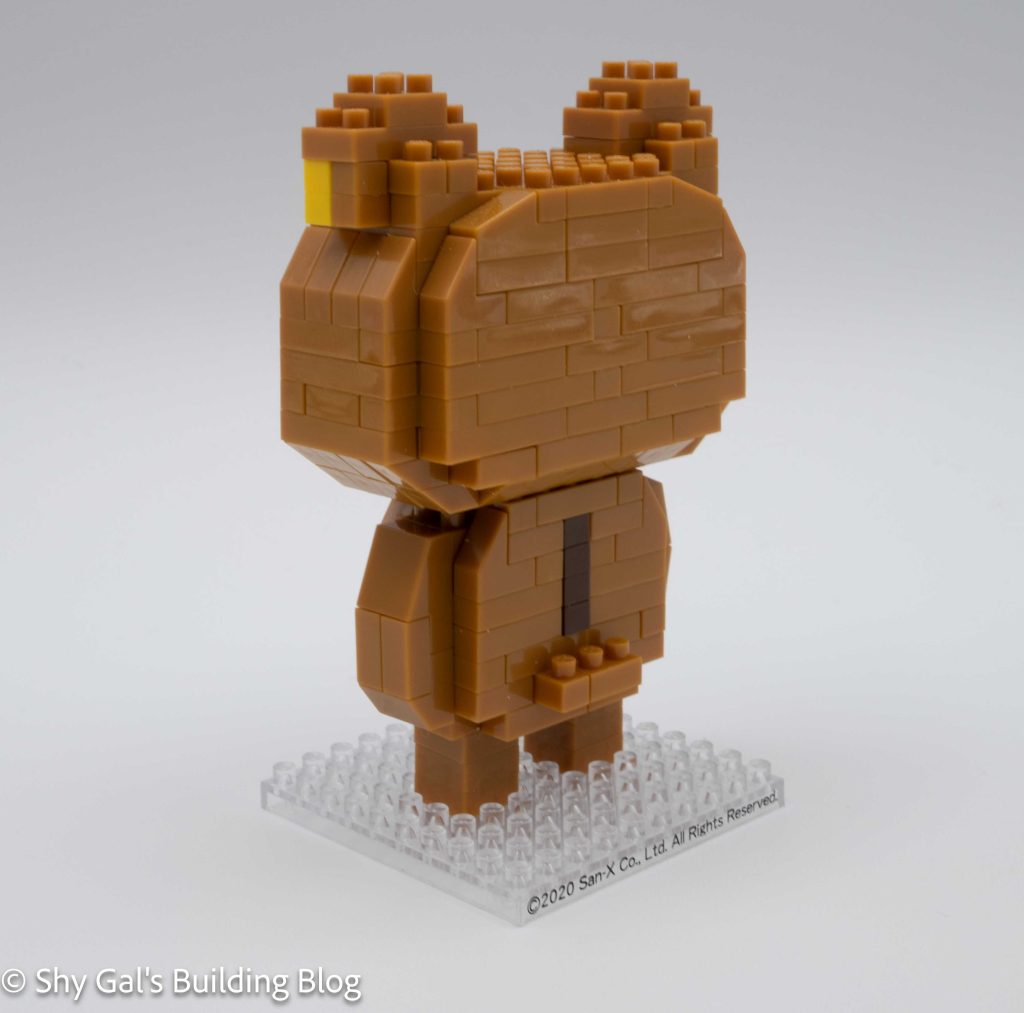
This build is split between the head and the body. You begin with a base layer of brown. Next, you add layers using brown and white. Once you reach the top of the body, you build and attach the arms. The final step of the body is to take the base, attach the legs, and attach the body to the legs. The next step is to build the head. The head begins with a brown base. You add layers of brown to create the head. After a few layers, you add a custom brick that makes the nose. Once you add the nose, you add a layer with a gap for the eyes. Next, you add the eyes, which are also unique because they are more like circles on a pole instead of a brick. You hold the eye brick in place with 2×2 bricks. After adding the face details, you build the head in layers. In the layer where you close off the head, you add the golden brown for the inside of the ears. Then, you build up the ears to complete the head. The final step is to attach the head to the body.

Things I liked:
- The custom nose brick and how it looks like it’s made of bricks
- The round eye bricks

